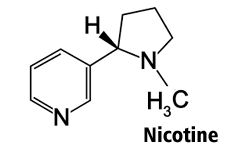Information
Journal Policies
ARC Journal of Addiction
Volume-3 Issue-1, 2018, Page No: 6-7
Schizophrenic Patient and Nicotine Addiction Clinical Observation in Psychiatry Out Patient
Dr. Eltoum Etdalhascompletedher
Faculty of Medicine School of Nursing, Psychiarty Nurse Coordinator of Mental Health Department King Faisal Hospital&Research Centre, Saudi Arabia.
Citation : Eltoum Etdalhascompletedher, "Schizophrenic Patient and Nicotine Addiction Clinical Observation in Psychiatry Out Patient" ARC Journal of Addiction. 2018 ; 3(1) : 6-7.
Copyright : © 2018 . This is an open access article distributed under the Creative Commons Attribution License, which permits unrestricted use, distribution, and reproduction in any medium, provided the original work is properly cited.
Schizophrenic Patient,Nicotine Addiction,Clinical Observation,Psychiatry Out Patient,Addiction
1. Introduction
Schizophrenia with regular frequency everywhere in the world in 1 % of population.
Its begins mainly in young age (mostly around 16 to 25 years).
Schizophrenia is defined by
1. a group of characteristic positive and negative symptoms
2. deterioration in social, occupational, or interpersonal relationships
3. Continuous signs of the disturbance for at least 6 months.
The etiology and pathogenesis of schizophrenia is not known It is accepted, that schizophrenia is „the group of schizophrenias “which origin is multifactorial: Internal factors – genetic, inborn, biochemical external factors – trauma, infection of CNS, stress.
Based on the supposed disorder of neurotransmission in the brain, derived mainly from the effects of antipsychotic drugs that have in common the ability to inhibit the dopaminergic system by blocking action of dopamine in the Brain.
Psychotic symptoms are related to dopaminergic hyperactivity in the brain. Hyperactivity of dopaminergic systems during schizophrenia is result of increased sensitivity and density of dopamine D2 receptors in the different parts of the brain.
supposes in schizophrenia the presence of “silent lesion” in the brain, mostly in the parts, important for the development of integration (frontal, parietal and temporal) Clinical symptoms not seen until late adolescence Complete myelination of cortex not complete until second or third decade.
Nicotine: Nicotine is an alkaloid refers to the 5 membered nitrogenous ring found naturally in tobacco plants, tomatoes, potatoes, eggplant and green peppers Nicotine isolated (1828)

2. Pharmacokinetics
The most common way to get nicotine into your bloodstream is through inhalation your lungs are lined by millions of alveoli, which are the tiny air sacs where gas exchange occurs. These ‘alveoli provide an enormous surface area, 90 times greater than that of your skin, and thus provide ample access for nicotine and other
To decrease risk of cardiovascular and pulmonary compaction and early death duehigh prevalence of nicotine dependence on schizophrenic patient other than mental disorders.
3. Methods
Clinical observation with schizophrenic patients and nicotine addiction.
All schizophrenic patients who are on antipsychotic medications compounds. Nicotine taken in by cigarette or cigar smoking takes only 10-15 seconds to reach the brain but other has a direct effect on the body for only ~30 minutes.
1. Children
2. Elderly patient with Dementia
4. Result
patients referred to psychotherapy in addition to nicotine replacement for better outcome.
5. Conclusion
In agreement with literature mild schizophrenia get benefit from cognitive behavioral therapy than severe schizophrenic patients.




